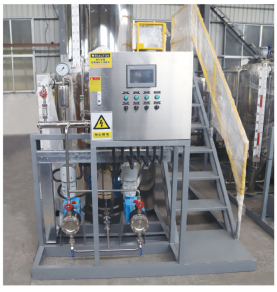Phosphate dosing device
Unit:
Size:
Price:
summarize
The main function of adding phosphate to the boiler is to prevent the accumulation of scale during the use of the boiler. Scale is due to the precipitation of some salt substances in the water (such as calcium hydroxide, calcium sulfate, sodium sulfate, etc.) at high temperatures, they will not only affect the thermal efficiency of the boiler, reduce the production efficiency of the boiler, but also seriously affect the operation of the boiler pipeline, greatly affecting the life and reliability of the boiler. Like the commonly used trisodium phosphate is a weakly acidic ionic focusing buffer, it can chemically react with calcium, magnesium and other metal ions in hard water, so that they can be converted into soluble salts that do not produce scale and prevent the formation of scale. In addition, phosphate can also inhibit corrosion reactions in boiler water and extend the service life of silver furnaces. In short, the addition of phosphate to the boiler can effectively prevent the scale generated during the use of the boiler, reduce corrosion, protect the boiler pipeline, thereby improving the thermal efficiency and production efficiency of the boiler, while extending the service life of the boiler.
Working principle
The device is composed of a control system and a dosing system. The control system is composed of an electric valve, a pressure sensor, a frequency converter and a control circuit. Dosing system consists of dosing pump and dosing box.
Because the pressure of the boiler system is relatively high, the hydraulic diaphragm metering pump is generally used as the dosing pump
Through the automatic control system, the dosing pump regularly adds drugs to the system, so as to adjust the boiler feed water PH value, so that the steel furnace feed water PH value is maintained within a certain range, so as to achieve the effect of sterilization and accumulation, scale removal and scale prevention.
Matters needing attention
In the high-pressure steel furnace system, it is necessary to control the start and stop of the metering pump through the liquid level, stop the pump at low level, and start the pump at high level. Pipelines should be made of materials with high pressure grades and welding methods. The selection of safety valves, back pressure valves, dampers and pressure gauges should be strictly based on the highest pressure at the outlet of the metering pump, and there is a margin to ensure the safety and stability of the system during operation.
